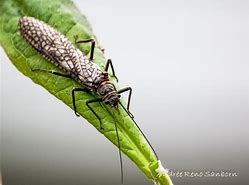Henry’s Fork, June 10th, 2023
The giant stonefly hatch is heading up the river but at a pace slower than last year. If you own a soft- sided boat ( rubber raft, etc.) a good trip considering active fish and lack of crowds, put in at the lower Mesa Falls access and float down to the Stone Bridge access just below the Warm River confluence. It is a beautiful trip, just beware of little Surprise Falls about a third of the way down the trip. Afternoon caddis activity is going on good up and down the river.
Headlines From Dr. Rob Van Kirk’s Water data report filed June 6th for the Henry’s Fork Drainage.
- As expected, snowmelt was lower yesterday because of cooler temperatures and loss of remaining mid-elevation snow. Snow remains only at the highest elevations.
- Natural streamflow was roughly constant yesterday at 110% of average, as Fall River and Teton River respond to the last gasps of high-elevation snowmelt.
- Heavy precipitation in the forecast could temporarily increase streamflow again next week.
- At an average outflow of 843 cfs, Island Park Reservoir gained 281 ac-ft yesterday and is 99% full. Outflow will continue to be reduced gradually as inflow decreases.

